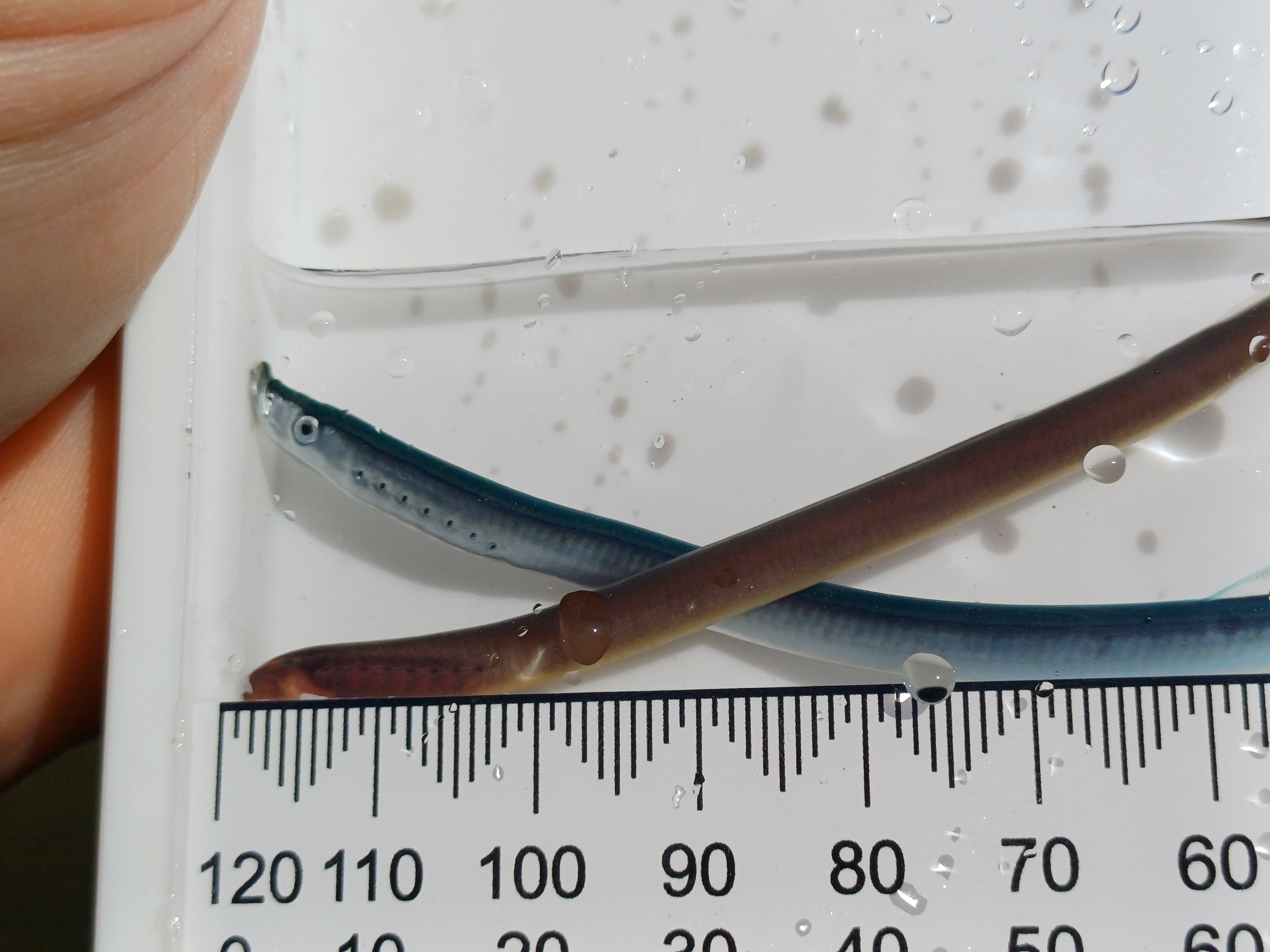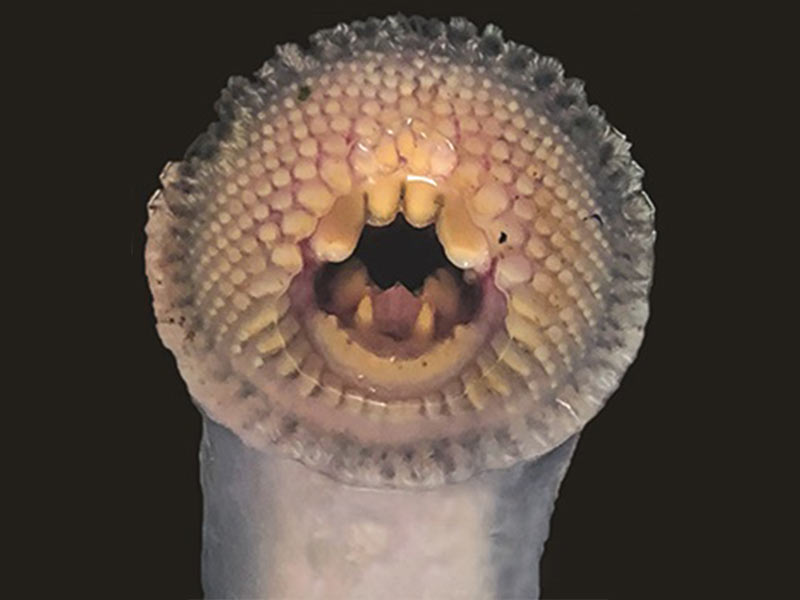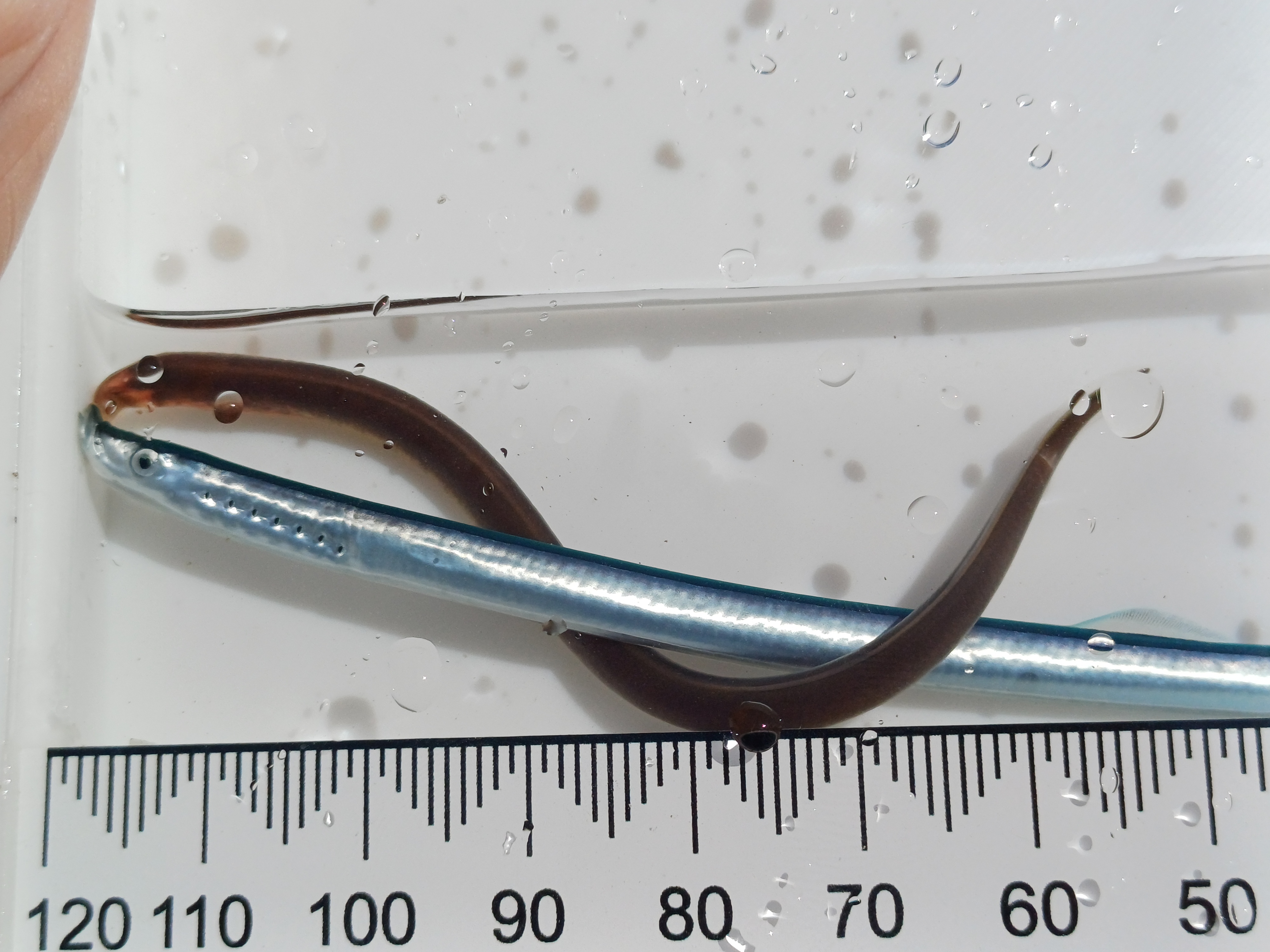Piharau /Lamprey
Piharau or lamprey are an ancient, primitive fish with a lineage dating back over 350 million years – a living fossil. They look like tuna/eels, with a long body, but are more closely related to sharks and rays. They have no jaw, but a round sucker mouth filled with a spiral of sharp, tiny teeth.
Of the 38 lamprey species internationally, New Zealand has just one, the Geotria australis. It can be found throughout New Zealand, but the species is under threat from climate change, loss of habitat, land development, declining water quality and flow, fish barriers and pollution. They are also impacted by exotic fish and emerging parasites and diseases.
Piharau are secretive, spending most of their life cycle hidden under fine sediment or rocks, or out at sea, moving mainly at night, with some aspects of their life still a mystery.
Current research suggests piharau have a 10-20 year life cycle. They start out as blind filter feeders in freshwater. At this stage the small eel-like fish called “ammocoetes” are up to 100mm long burrowing into sandy, muddy shallows.
They then metamorphose (change), from brown to silver with blue stripes on their back and big silver eyes, they are now called “macrophthalmia”. At this stage they migrate to the ocean and become fish parasites, like vampires they attach themselves to larger fish with their sucker mouths and feed off their blood and flesh.
After 3-4 years in the ocean, the adult lamprey stops feeding, entering freshwater again in winter/spring, migrating upstream searching for spawning grounds. Over the next 18 months they turn brown, pair up, burrow under a big rock and spawn. The parents guard the eggs until they eventually die, the eggs hatch and the life cycle begins again.
Piharau / lamprey facts
- The species is over 350 million years old – a “living fossil”
- One lamprey species Geotria australis, found throughout New Zealand
- Conservation status – Threatened – Nationally Vulnerable
- Māori names for lamprey differ, mostly known as piharau in the North Island and kanakana in the South Island
- Migratory fish with a distinctive and complex lifecycle.
Piharau / kanakana – taonga species
Piharau / kanakana are a mahinga kai species for Māori. In the past they were seasonally abundant in NZ and were harvested using traditional methods.
What you can do to help
- Fence waterways and exclude stock to improve water quality
- Riparian native planting around streams and rivers
- Ensure free fish passage through to the sea
- Be aware when interacting with freshwater habitats that the species may be present, even if you cannot see them.
If you visit our lakes and rivers, you can help to prevent the spread of freshwater pests by using the ‘Check Clean Dry’ method.
- CHECK equipment and remove any fragments of plants or weeds
- CLEAN all equipment that had been in contact with water
- DRY equipment thoroughly and then wait for at least 48 hours before entering water again.

A Piharau (Lamprey) in a freshwater stream. Photo credit: NIWA.

NRC staff measuring juvenile piharau, macrophthalmia (silver) and ammocoetes (brown).

A close up of the mouth of a Piharau (Lamprey) showing its many teeth. Photo credit: NIWA.

NRC staff measuring juvenile piharau, macrophthalmia (silver) and ammocoetes (brown).
